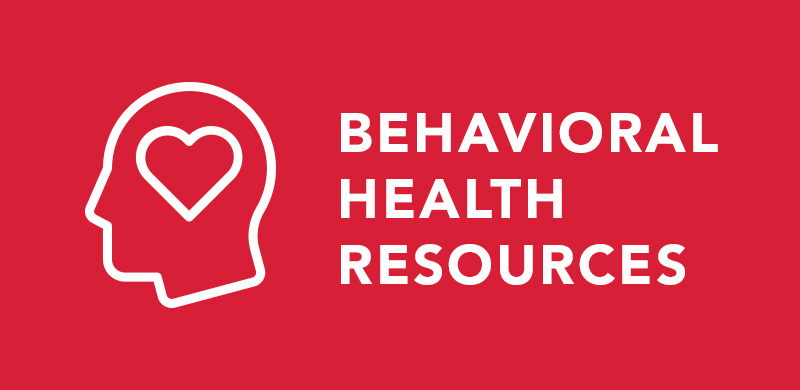
Published April 2022
Making medical decisions, understanding benefits and selecting the right health plan option can be a daunting process. From trying to grasp health insurance terms, like deductibles, out-of-pocket-maximums and copays, to understanding how these terms apply to personal health needs and coverage, it can feel like learning a new language.
Add in managing the health needs of children, spouses or older family members, and the stress amplifies—and when it comes to making vital health care decisions for the family, it is estimated that women bear the responsibility 80% of the time.
Here we’ll look at the challenges facing women in their role as health care decision-makers, as well as ways that support can be accessed when making these crucial decisions.
 Challenges health care decision-makers face.
Challenges health care decision-makers face.
Most caregivers are women, and in many instances, they’re asked to take a forward-looking view on potential health care decisions that have an impact on themselves as well as loved ones. These decisions run across the spectrum, whether it’s a pregnant woman looking at the year ahead with her spouse and soon-to-be newborn, a single mom of two choosing a plan for her family or a woman taking care of a sick parent. “Women are thinking about their utilization more, they’re estimating more, they’re planning for worst-case scenarios,” said Heather Rogers, director of customer success and implementation at MyHealthMath, a Portland, Maine-based company that supplies support services for health plan decision-making.
They’re also spending more on health care than men (upwards of 20%) and are more likely to struggle financially. “One in four women are having trouble paying their medical bills, and this is directly related to the pandemic,” said Rogers. According to Fidelity, the financial discrepancy continues through retirement, with women often having to spend more money than men on their own medical needs or on caregiving costs.
And it’s not just the complex health care system that women take on. Often they’re juggling other obligations like working, caregiving for their children or elderly parents (sometimes both), or running a household. These are all responsibilities that add to a woman’s mental load, which is the non-tangible, cognitive labor involved in managing any given task. Remembering to sign field trip forms, deciding what to make for dinner and considering how to present a topic in a meeting all contribute to mental overload. For anyone taking on too many of these non-tangible tasks, burnout can occur.
All these factors contribute to why it’s vital to provide education and support on health plan benefits and offerings available to anyone in a health care decision-making role. To help with this, Point32Health companies Harvard Pilgrim Health Care and Tufts Health Plan partner with MyHealthMath to offer the decision support service to many of their employer accounts.
Learn More >> Log into the member portal for resources & support
 Talking through the “what ifs.”
Talking through the “what ifs.”
When making health care decisions, it’s important to have a comprehensive understanding of what services are covered through your health plan and what might require an out-of-pocket cost. One way to accelerate understanding, notes Rogers, is through coaching decision-makers to feel comfortable talking through “what if” scenarios. It’s these moments, when recognizing how to weigh the physical and financial impact, that empower an individual to drive to a decision.
“What happens if we’re on vacation and my child gets an ear infection?” According to Rogers, this is an example of a question that a woman caregiver might raise when working with MyHealthMath for plan selection support. “Children have a lot of unexpected medical services that pop up throughout the year. It’s about helping the parent plan for that by finding something that fits their needs and budget.”
MyHealthMath helps employees save $1,300 a year on average through plan selection support, and health insurers are also offering ways for members to manage out-of-pocket costs after coverage is selected. Cost savings tools, like Reduce My Costs and Estimate My Cost, improve cost transparency of medical services at different providers and facilities. These programs are available to eligible Harvard Pilgrim Health Care members for better health decision-making throughout the year.
 HSAs, a powerful savings tool for women.
HSAs, a powerful savings tool for women.
One way to potentially reduce health care costs today while continuing to save for the future, especially for women with accruing medical costs, is through a Health Savings Account (HSA). Offered with certain high-deductible plans, HSAs allow employees to set aside pre-taxed dollars to use towards qualified medical expenses, with funds rolling over year after year. This is a powerful savings tool, and investing in an HSA now can set women up for financial success as they age and eventually retire.
“The gender pay gap and gender-based health disparities make it all the more important to help women access, understand and utilize health savings vehicles, like HSAs—because these impact both their health and finances,” said Rogers. However, HSAs aren’t always utilized, due to a lack of understanding as to how they work. And – women take note – this savings vehicle has benefits for multiple generations when it comes to financially planning for current and future health care costs, as well as retirement. Here are a few examples:
- For a typical “young and healthy” woman in the workforce with basic health care needs, choosing a high-deductible health plan with an HSA can help to minimize overspending on coverage. It can also be kept when switching health plans or jobs, which is likely to happen throughout a person’s career.
- For women who might decide to take some time away from the workforce for caregiving needs, there is the option to continue to invest tax-free dollars into an HSA.
- A woman is more likely to spend more on out-of-pocket health care costs during retirement than a man, as women live an average of five years longer. Because of this, taking advantage of HSA tax breaks can be of value now and in the future.
During open enrollment, MyHealthMath helps to educate employees on the value of HSAs so they can understand if an HSA-eligible plan is a good fit. Employers are also recognizing the need to communicate the advantages of HSAs throughout the year and encourage participation with employer contributions—something 83% of employers currently do.
Learn More >> Find a health care provider
 The bottom line on female-made health care decisions.
The bottom line on female-made health care decisions.
If you are the primary decision-maker on health care needs for your family, be sure to consider your own needs first. Prioritizing your own health (and health care needs) will put you in the best position to ward off feelings of burnout, and help with making decisions that are sustainable in the long term as you advocate for yourself and your family. While you may not have all the answers, be proactive in seeking out guidance and support, particularly around the “what if” scenarios that come to mind. And remember, through all the planning and stress, give yourself grace.
To confirm eligibility for any programs or services mentioned in this article as it relates to your specific health plan, please reach out to your account executive or HR benefits team. You may also speak to our member services team at (888)-333-4742 or by sending a secure email. And for plan details and other member resources, log in to the member portal.


